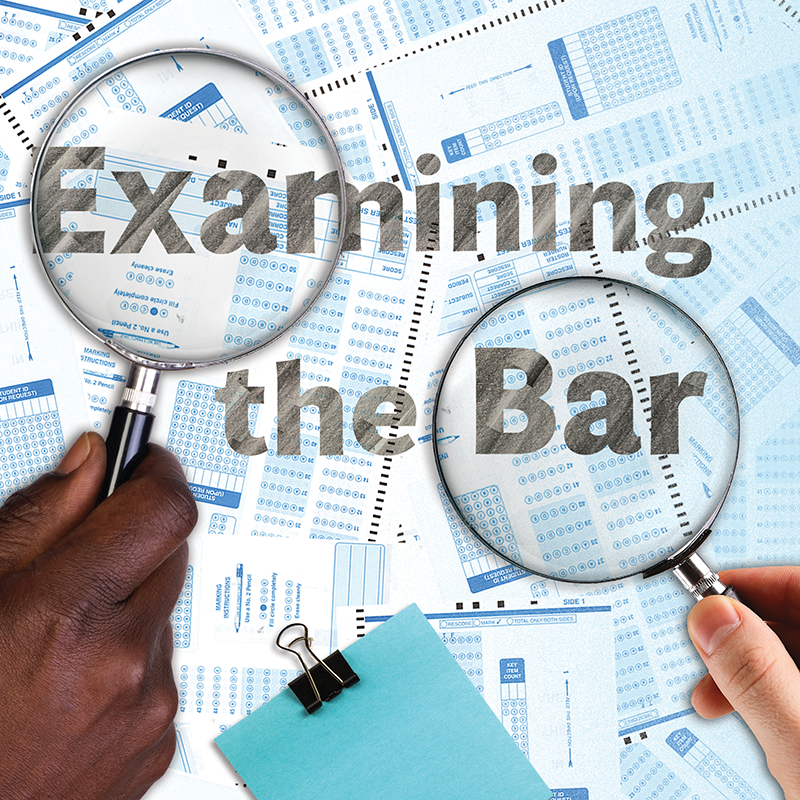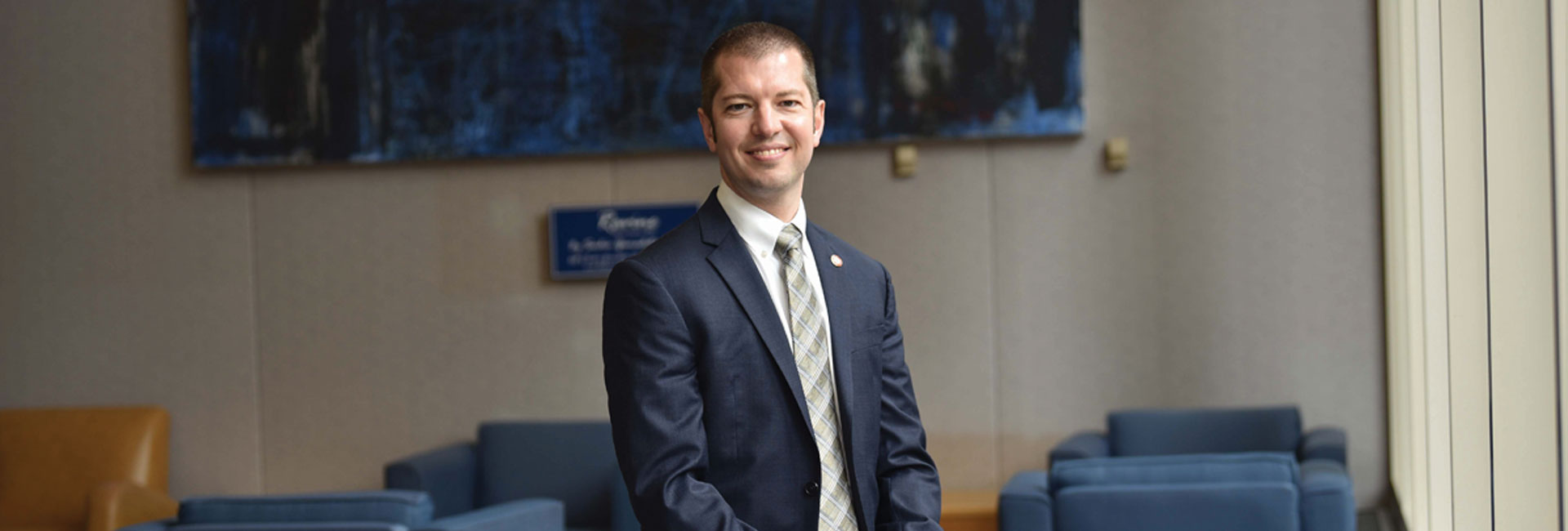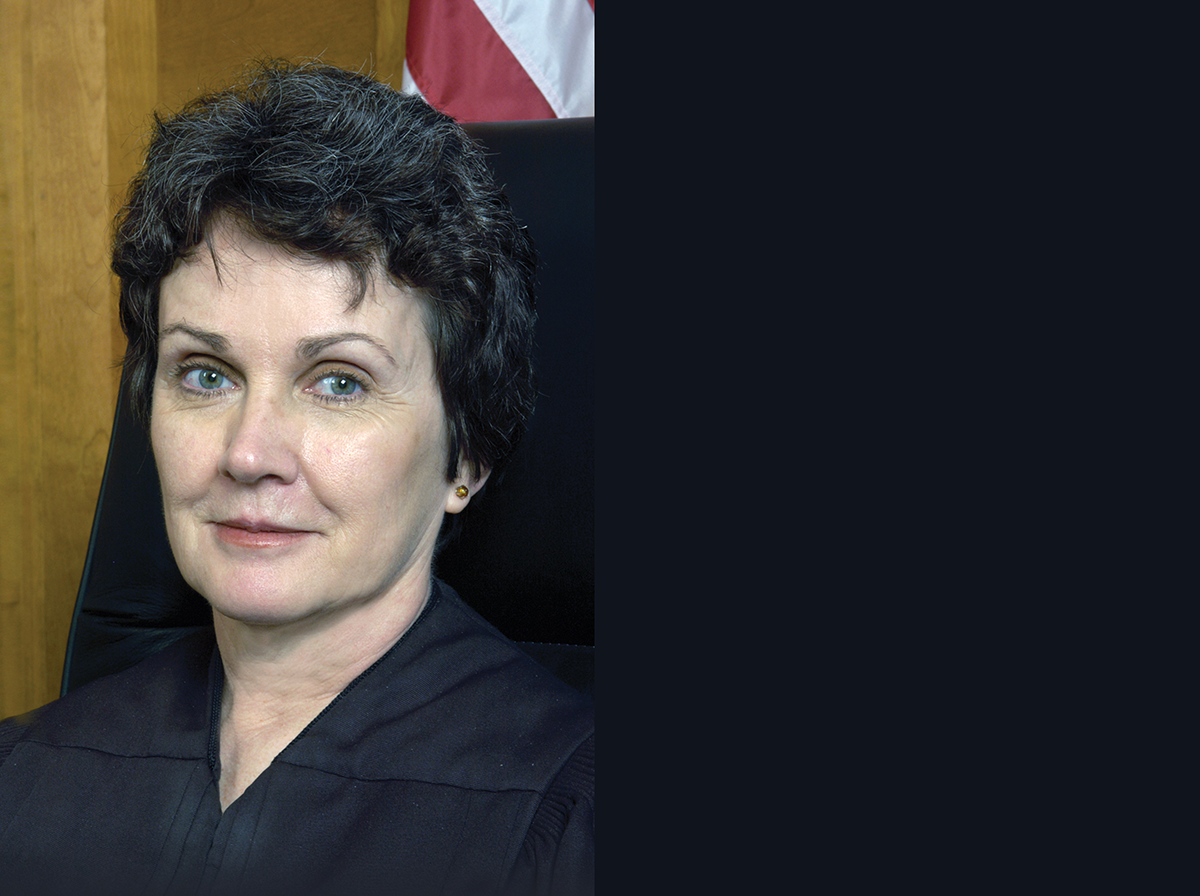
Brian Gallini, dean of Willamette University College of Law, supports keeping the bar exam—as well as adding two alternative paths to attorney licensure. But he admits it’s not a popular position among his school’s alumni.
It’s not because they loved studying nonstop for two months to take an exam filled with subject matter they would forget about the moment their pencils hit the table and never use in their professional careers.
It’s certainly not because the bar exam prepared them for practicing law. Gallini says most alumni tell him when they first started practicing law, they didn’t know how to do things and often received instructions from paralegals.
It’s not because the test is equitable. Based on statistics, the first-time pass rate for white candidates in 2021 was 85%, compared with numbers below 79% for test-takers of color, according to ABA data.
It’s not even that the score means much as far as setting baseline qualifications for bar admission. Gallini points out the Uniform Bar Exam and its portable score, emphasizing that since each jurisdiction sets its own cut score, a candidate can fail in one place but pass in another.
Once he cuts through those various arguments, he estimates that it takes him about 15 minutes to persuade someone of the need to reform the bar examination process.

“I have found this conversation does not work well in a group; it has to be one-on-one. It’s letting the person vent and articulate their concerns. I think people are changing their minds organically,” adds Gallini, who served on the Oregon Supreme Court’s Alternatives to the Bar Exam Task Force. The group came about after the state granted emergency diploma privilege—thanks to the COVID-19 pandemic—to 2020 graduates of Oregon law schools slated to take the bar exam that July.
At a January 2022 public meeting, the Oregon Supreme Court unanimously approved in concept two new attorney licensure plans, and the state is now working on implementation. One plan involves obtaining a license after completing a law school experiential learning program focused on skills including legal research, issue spotting and argument development. The other plan supports licensure after completing between 1,000 and 1,500 hours of supervised practice after graduation. There would still be a bar exam option.
California, Massachusetts, Minnesota, Nevada, New York, Utah and Washington also have groups studying attorney licensure. Like Oregon, most are considering admissions alternatives in addition to the bar exam.
"There's some old-school thinking involved: 'If I went through the bar exam, you have to too.'" –Pete Wentz, executive director with APCO Worldwide
Lawyers involved with these working groups say two primary factors led to the profession being more open to admissions alternatives: that there’s scant if any data to show a connection between cut scores and competence to practice law; and that the pandemic altered the country’s notions about how things should be done.
“I think it just woke people up. It’s easy to say, ‘We’ve been through this, you can learn this stuff,’ to then have your vision shifted to think, ‘Really, did I learn anything from taking the bar exam that mattered?’” says Carol Chomsky, a University of Minnesota Law School professor.
She’s one of 11 law professors who wrote an often-cited March 2020 white paper, “The Bar Exam and the COVID-19 Pandemic: The Need for Immediate Action.” Chomsky also was involved in working groups that prepared reports focused on the bar exam for the Minnesota Board of Law Examiners. The groups support three pathways to licensure—a National Conference of Bar Examiners bar exam; a law school program with licensure through completion; and supervised practice, completed after graduation. After a public comment period, the agency will prepare a report for the state supreme court.
But don’t burn your bar study aids just yet. “We should pause and understand that the traditional bar, right now, is not going away. I’m super proud of our bar pass outcomes,” Gallini says.
After all, the profession often has a hard time with change, and some have said there’s a sense that keeping a bar exam will likely assure people in power that wealthy clients won’t be harmed by admissions alternatives. It’s also unlikely to hurt profits for large law firms. Nevertheless, lawyers interviewed by the ABA Journal say it’s important that states are even considering changes at all.
Even if it’s been years since a lawyer passed the bar exam, there’s a good chance that lawyer will still complain about the experience.
In 2020, candidates got even more than they bargained for as they faced the stress not only of studying for the bar but also uncertainty about when the test would be given and whether it would be in person or online.
Many candidates in states with July 2020 in-person exams feared they’d catch COVID-19 at testing sites. Meanwhile, examinees in jurisdictions using the NCBE’s remote exam, which was given that fall, worried about software problems, and for good reason.
Facial recognition identity verification and proctoring videos were required for use of NCBE remote testing materials, and there were accusations that both led to significant computer problems for some during the test. Additionally, hundreds of candidates, mostly in California, faced allegations of cheating from the state bar based on the video footage. Many of those allegations were unfounded.
The bar exams created so many problems that they prompted the social media hashtag #barpocolypse.
After the July 2021 bar exam, the NCBE ended its remote testing option. It also has plans for what it calls the “NextGen” bar exam, which is expected to be implemented in 2026. A testing task force was appointed by the NCBE in January 2018 to research the idea. Various factors, including technology and globalization, led to the upcoming changes, according to Judith Gundersen, president and CEO of the NCBE.

The new exam won’t have the traditional stand-alone sections—known as the Multistate Bar Exam, the Multistate Essay Exam and the Multistate Performance Test—but will instead use integrated sets of questions, which likely will include short-answer questions, writing and drafting prompts, and multiple-choice questions. Pretesting began this summer, Gundersen says.
The current bar exam is “highly scalable,” and that also will be true for the next exam, according to Gundersen.
“For the alternative pathways under discussion, the number of schools in a jurisdiction or the number of supervised practice positions may serve to limit how many people can participate; continuing to offer a bar exam ensures access for those candidates that can’t or don’t wish to become licensed through one of those programs,” she wrote in an email to the ABA Journal.
Richard M. Trachok II, who has chaired the Nevada Board of Bar Examiners since 2000, describes the MBE, which is a series of 200 multiple-choice questions, as a “concrete life preserver.”
In August 2020, Nevada used an open-book test with questions written by the state board of bar examiners rather than NCBE testing materials. Since then, the state has used its own exam, with the exception of July 2021, when it used NCBE materials. Nevada’s August 2020 and February 2022 bar exams were remote.
“We did not want to take the risk of having the exam crash while examinees were taking the test,” says Trachok, a Reno, Nevada, lawyer who handles gaming and administrative law matters. He also chairs a Supreme Court of Nevada commission appointed to study the bar exam and attorney licensing.
“I know states are not happy with the National Conference of Bar Examiners, and that’s why they’re looking at this,” Trachok says. “In Nevada, the board of bar examiners has been very open, and we’ve continued to change through the years because we know this is not a perfect process.”
"Behind closed doors, you can make highly technical arguments about who will be affected, and what does it mean for the rest of the market." –Nan Jia, professor at the University of Southern California Marshall School of Business
Everyone hates the bar exam, according to Pete Wentz, a former associate dean at Northwestern University Pritzker School of Law. But he says at “elite schools,” where many graduates go into private practice, people will continue to see the test as a necessity. He suspects that will be true at law firms too. “They want a common standard that all of their lawyers have been able to meet. It’s one more hurdle they believe their lawyers should get past. And there’s some old-school thinking involved: ‘If I went through the bar exam, you have to too,’” says Wentz, who’s now an executive director with APCO Worldwide, where he handles crisis and litigation communications.
Courts may be more open to different admissions paths if they are convinced that only “the lower end of the market will be affected,” depending on how justices weigh different decisions, says Nan Jia, a professor at the University of Southern California Marshall School of Business whose academic research includes corporate political strategy and business-governance relationships.
“Behind closed doors, you can make highly technical arguments about who will be affected, and what does it mean for the rest of the market. Another critical part, which is not observed, will be deal-making,” says Jia, adding that negotiations will be easier if wealthy people are not affected.
According to a September 2020 NCBE survey of U.S. adults, 60% favored keeping a supervised in-person bar exam with masking and social distancing.
“Admittedly, this survey didn’t look into attitudes about alternative pathways, but I do think that the overwhelming public support for an exam is telling,” Gundersen wrote.
In New Hampshire, the state supreme court in 2005 approved an honors program at the University of New Hampshire Franklin Pierce School of Law in which completion allows graduates to be admitted to the state bar.
“I don’t think the consuming public had any idea the New Hampshire Supreme Court was even considering anything,” says Linda Stewart Dalianis, a retired chief justice of the court.
Experience as a trial judge influenced her decision to support the idea. At the time, many University of New Hampshire law graduates were starting their own law firms, and she frequently saw them make mistakes in court.
Students can apply to the Daniel Webster Scholar Honors Program in their first year after completing second-semester midterms, and grades are considered.
“I wanted a program that wouldn’t be aimed at people who would pass a bar anyway and be opened up to those who might not have had the right training. But in the early days, the only way to sell it to people whose opinions mattered was to say it was an honors program,” Dalianis says.

James Duggan, another retired justice who had been a law professor at the University of New Hampshire, also supported the idea.
The court has five members, and Dalianis says getting all to support the plan was difficult.
“Largely, I think, because it was such a radical idea, and they hadn’t been entirely sure we’d be able to turn it into reality,” Dalianis says. There was a three-year limit, but after the time period ended, the program easily got full approval from the court, Dalianis says.
“It was obvious this was showing results and attracting people to the law school. The fact was, we created an alternative means to be admitted to the bar that wasn’t hurting anybody,” Dalianis says.
"My guess is judges don't know who has been admitted which way." – Utah Supreme Court Justice John Pearce
According to the law school, out of the more than 700 applicants in the past two years, over 500 indicated the program was a reason why they were interested in the law school.
In Utah, a state supreme court-appointed working group is examining attorney licensing. Discussions gravitated toward supervised practice, coupled with adding specific law school courses.
“We’re talking about an alternative path that would sit alongside the bar. If you didn’t want to take the bar and just practice in Utah, this could create a path for you,” says Utah Supreme Court Justice John Pearce, a member of the working group.
Members of the court have various reasons why they wanted a working group to examine alternative licensure, he says. Alternative licensure could make things easier for new graduates, and such a plan has the potential to help meet the legal needs of communities that are traditionally underserved.
“I think that each of my colleagues came at this question from slightly different directions and with divergent expectations for what changing bar admissions might mean for Utah. We all shared the belief that the question was ripe for exploration,” he says.
According to Pearce, working group tasks have included meeting with the NCBE, talking to other jurisdictions and having discussions with retired law professor Deborah Merritt, who wrote the often-cited 2020 article “Building a Better Bar: The 12 Building Blocks of Minimum Competence.” That article calls for replacing essay questions with performance tests and requiring supervised clinical work for licensure.
Utah was the first state to grant emergency diploma privilege during the pandemic in an April 2020 state supreme court order. It applied to first-time test-takers scheduled to take the state’s July 2020 bar and had graduated from ABA-accredited law schools with first-time bar passage rates of at least 86% in 2019; lawyers already admitted to other state bars who had applied to take the test also were eligible. The order also required candidates to complete 360 hours of supervised practice by licensed Utah lawyers.
By December 2020, the Utah Supreme Court announced it would be using the NCBE’s remote bar exam for its February 2021 administration. It also created the bar exam working group to study the issue further.
Some attorneys told the court they would not hire lawyers who didn’t pass a bar, Pearce says.
“I’ve also heard attorneys say, ‘Not passing a bar is fine for the associates we hire because we only hire the highest-quality associates,’” he adds.
Pearce hasn’t heard complaints from trial judges about lawyers admitted through diploma privilege lacking knowledge.
“My guess is judges don’t know who has been admitted which way,” Pearce says.
A benefit of Utah’s July 2020 emergency diploma privilege: Brigham Young University J. Ruben Clark Law School went from No. 29 last year to No. 23 in this year’s U.S. News & World Report law school rankings; and the University of Utah S.J. Quinney College of Law is now at No. 37, compared with No. 43 last year.
The most recent rankings were based on data from 2020 graduates, including first-time test-taker pass rates and employment outcomes. The Utah schools saw increases in both categories.
So did Oregon’s Willamette Law, and the school went from the Nos. 147-193 range last year to No. 129 in the rankings this year.
Like Gallini, many law school deans support bar exam alternatives, but for now it appears their position may not line up with that of the council of the ABA Section of Legal Education and Admissions to the Bar. The preface section of the ABA Standards and Rules of Procedure for Approval of Law Schools states that it believes every bar candidate should be “examined by public authority to determine fitness for admission.”
There are questions of how jurisdiction changes would comport with an ABA bar passage standard. In August, the section’s council approved a standards committee suggestion that the committee review existing language in Standard 316 to ensure it doesn’t “unduly dissuade” law schools and attorney licensing authorities from exploring alternative licensure pathways.
Under current ABA rules, law school graduates admitted to practice law outside of bar passage are counted as having passed the bar.
Also, there are questions about how experiential learning programs would be implemented. Socratic-type teaching, which includes lectures given to large classes, is more cost-effective than experiential learning, Gallini says, and some tenured faculty have no interest in shifting from podium lectures.
“In a shared governance model, faculty owns two things: curriculum and hiring. So don’t assume that because I’m energized by these things the faculty will be as well,” he adds.
Experiential learning could be taught by faculty or adjuncts and through existing clinics. But it will have additional costs.
“This would be a very intentional shift in resources. That’s why we can’t do all this overnight,” Gallini says.